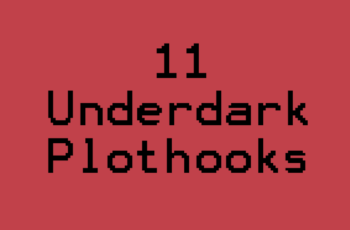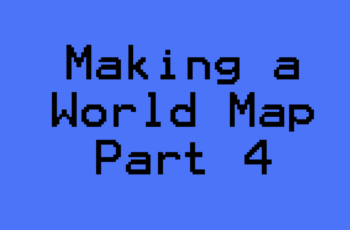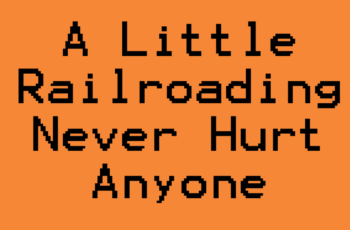Players sitting around on their cellphones…
Side conversations overtaking gameplay…
Nobody has any idea what is happening…
Does this sound familiar to you?
Hopefully not, but in reality it’s an all too common gripe of dungeon masters. As a Dungeon Master it is your responsibility to keep the players captivated and involved. Ultimately you must make your imaginary world more interesting than the real world – temporarily at least. One way to do this is by keeping the players engaged by vividly describing as a DM.
I can understand why a lot of people check out mentally when all they are given as a description of the scene is a measly “You enter the tavern.”
Boring.
It sucks as a dungeon master to feel like a failure because your players aren’t interested at all; not to mention the time spent preparing which feels like it went to waste.
Rather try something like,
“The room you enter is 100 feet wide and 50 feet deep with high vaulted ceilings. Rows of torches line the walls, offering a dim light which causes shadows to flicker every which-way. Immediately you notice a large animal-bone chandelier swaying slowly back and forth above you. On your left, a bar – approximately halfway full – stretches the length of the room. The right side of the room is filled with dwarves who seem to be circled around an event. From the crowd, you a rhythmic pounding of metal when they suddenly burst into both cheering and boo’ing. Despite the ruckus, everyone seems to be in good spirits here.”
It looks like an intimidating amount of text and description, but it shouldn’t take you more than a minute or two to speak aloud. This little bit of extra time invested in a description will make a HUGE difference to your players and your overall game.
This description consisted of 5 primary items
1. Size
2. Lighting
3. Senses
4. Events
5. Mood
In this article, I’m going to break down the process I use for quickly and easily describing scenes as a Dungeon Master.
1. Size of the Room
Begin by simply stating the dimensions of the room your players are in. If they are outside, or not in a well-defined room, you can instead just describe the range of their vision. What’s important during this step is giving the player some sense of scale. Let them know with numbers and units how big their “stage” is. This step is important but it shouldn’t take more than a quick sentence.
2. Lighting
Next, describe the lights – if any – in the scene that you are setting. If there is zero light sources, be sure to tell this to players and take it into account for any actions or events.
Things to take into account:
What type of source is it coming from (torches/sunlight/magic/braziers/etc), and how many sources are there?
How bright (darkness, dim light, comfortable, painfully bright)?Is the light steady or flickering?
3. Senses
Another important aspect of your scene is to describe what the players are experiencing through their senses. This will primarily include: sights, sounds, and smells. If there are other senses you think are important for the scene, feel free to include these as well.
A. Sights
Begin by describing 2-3 main objects that the players can see, *very very* briefly. You can always improvise more details if they want to investigate to learn more about these objects. Actually in being brief with these descriptions you’re going to prompt action from the players causing them not to sit around and wait for you to do something — but rather interact with the world.
B. Sounds
The second sense to describe is sound. Perhaps upon opening the door, players hear an arcane crackling of electricity and hushed murmurs.
Questions to think about:
What sounds are there, if any?
Is there a single noise or is it, rather, a cacophony coming from multiple sources?
How loud are the sounds?
Is there an obvious source?
If not, then what direction are the sounds coming from?
C. Smells
I typically only add smell when I think it will be adding a substantial amount of immersion to the scene. Even a brief sentence can help tie together other elements of the scene. Think about the objects that you described in the room. Are there any smells strongly associated with these objects, or the room in general?
Examples:
Acrid chemicals burning your nostrils
Sweet flowers and fresh air
Stale beer and piss
4. Events Happening
You’ve carefully crafted this beautiful scene but now it’s time to breathe life into it. It’s important to think of scenes as organic living places. You need to imagine that they have existed long before the party stumbled upon it. What sort of events could be taking place at your location?
Points to consider:
Are there any living creatures or NPCs?
The easiest way to include an event is by having the NPC/creature interacting with the environment in some manner. It could be people playing cards in the corner or a goblin king looking over his treasure horde.
If not, are there any inanimate objects doing anything?
This could be natural features (waterfalls cascading), or manmade object (clock chiming, gears mechanically shifting around),
There may not necessarily be any events going on if the location has been abandoned for years and years. However, I typically find that it is best to try and include at least one event or “happening” to help engage players with the scene.
5. Mood
Finally you’re going to set the mood for the scene. The easiest way to do this is by simply telling the characters how/what they are feeling.
“You can’t help but feel a sense of urgency in the air.“
“Upon entering the new room, a wave of relaxation and calmness rushes over you.“
“As you notice the decomposing remains in the corner, a cold shiver runs up your spine.“
If you’re feeling stuck or are not sure exactly what emotions you’re trying to convey, take a look at this huge list of emotional words.
Another method that can be useful in describing mood is changing the cadence and volume of your speech. This shouldn’t be anything too over the top, just enough to convey an additional layer for feelings and mood.
For example:
If you’re trying to build suspense: start off strongly and add dramatic pauses in between sentences here and there
If you’re trying to convey chaos: speak rather quickly, maybe even jumbling up a few words and running sentences into each other
If you’re trying to demonstrate tranquility: speak in a softer mellow voice with very little variation in tone
That’s it, you now have solid points of reference when describing a scene!
One of the best parts about breaking down scenes like this is that it can be transferred into a few bullet points and put on an index card. To finish off this article I’ll show three different examples of scenes broken down using this technique.
1. Tavern
- Size
- Crowded small room (25*50ft)
- Light
- Colored lanterns every couple of feet on the walls, steady dim light
- Sight
- Giant snake skeleton on ceiling
- Magnificent bastard sword above the bar
- Sound
- Chatter from patrons, loud laughter
- Clinking of drinks
- Smell
- Roasted/spiced meats and vegetables
- Events
- A few half orcs rolling barrels of ale into the back
- Gnome drunkenly jumps onto a table and falls off shortly after
- Mood
- Jovial
2. Battlefield
- Size
- Rolling hills and fields as far as the eye can see
- Light
- Bright sun filtering down through light cloud coverage
- Sight
- Ground scattered with bloodied corpses from each side
- Portable tents with troops standing nearby
- Sound
- Thunderous sound of horses galloping
- distant clinging of metal
- yelling and screaming
- Smell
- Odd mixture of horse shit, fresh death, and oil burning
- Events happening
- Giant trebuchets hurl flaming rocks into the midst of the battle
- Commander raises his sword, charging forwards on his horse
- Mood
- Chaotic and adrenaline filled
3. Dungeon Vault
- Size
- Large open room (75*75ft), high vaulted ceilings
- Light
- Single, large arcane fire in center of room
- Sight
- Piles & piles of treasure (gold, gems, sculptures, art)
- Skeletons in manacles around walls
- Sacrificial altar at the head of the room
- Sound
- Nothing except for crackling of fire and dripping water
- Smell
- Dank and musty stale air
- Events happening
- Flames roar and spiral into 3 fire elementals
- Maniacal laughter echos through the room
- Mood
- Spooky
Through this method you will be able to create scenes in less than 5 minutes of prep time, and through a little imagination it will be effortless to turn bullet-points into a vivid mental image.

FREE 5 day email course
Be sure to join the email list and sign up for the FREE 5-day email course centered on running your very own homebrew campaign! You'll learn everything you need to get started, from designing a story arc to reacting to (unexpected) player choices.
11 Plot Hooks for the Underdark (DnD 5e)
We're going down unda (no not Australia) with these 11...
Read MoreHow to Make a D&D World Map: A Non-Artist’s Guide (Part 4)
In the final post of the map making series, I'll...
Read MoreA Little Railroading Never Hurt Anyone
Find the perfect balance in DnD 5e between railroading and...
Read More


